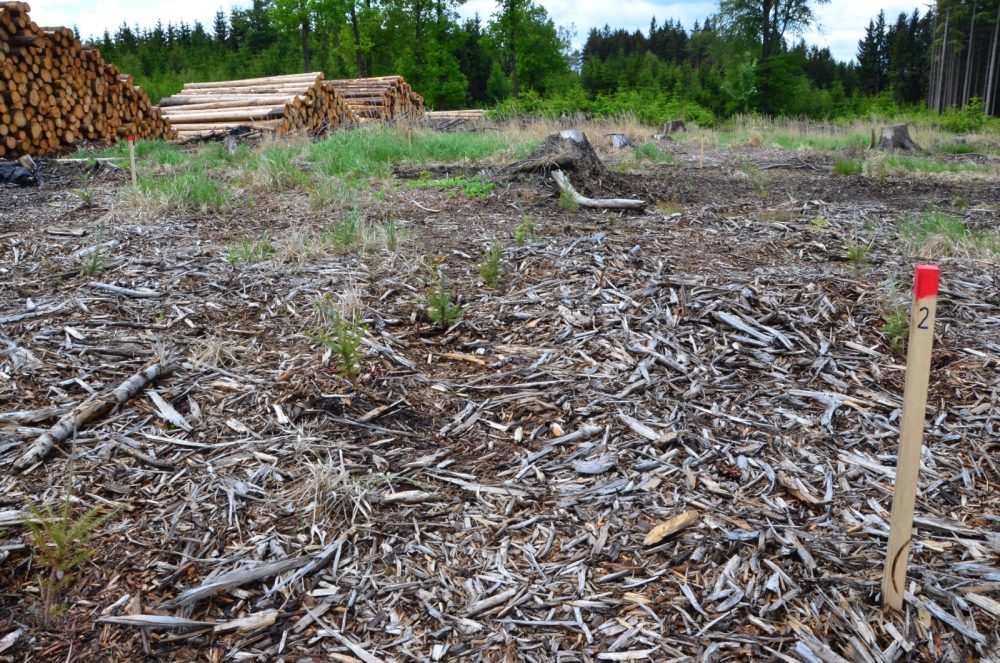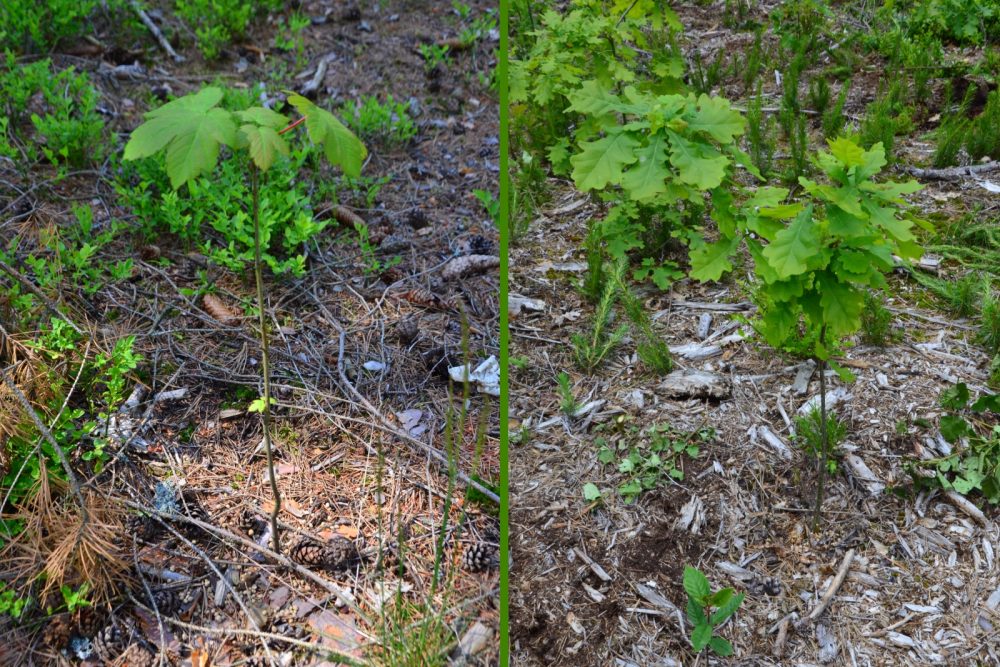The healthy growth of future forests is threatened by the lack of nutrients in forest soils
Soil is of fundamental importance for the nutrition and stability of forest stands. Soil formation is very slow, one centimetre of soil takes up to a hundred years to form. In the last 150-200 years, industrial emissions have led to significant disruption and damage to the forest environment, including the soil.
 The forests of the Czech Republic are dominated by strongly acidic and moderately acidic soils with low concentrations of the main nutrients (calcium, magnesium, potassium, phosphorus) in the upper mineral soil, up to a depth of 40 cm. The lack of these elements is manifested in low to very low saturation of the sorption complex of soils with bases.
The forests of the Czech Republic are dominated by strongly acidic and moderately acidic soils with low concentrations of the main nutrients (calcium, magnesium, potassium, phosphorus) in the upper mineral soil, up to a depth of 40 cm. The lack of these elements is manifested in low to very low saturation of the sorption complex of soils with bases.
Photo: Research trial at Forest District Telč with seedlings of Norway spruce, FGMRI archive
The current state of forest soils in a number of regions cannot guarantee the long-term sustainability of forest management and naturally replace nutrient losses due to biomass loss. During forests regeneration, it is not possible to rely only on nutrients from the overlying organic horizon in the long term. Therefore, it is necessary to pay attention to chemical meliorations and a sensitive choice of woody composition much more, than it has been the case so far. Without supplementing forest soils with compensatory fertilization, e.g. it is a risk to remove residues after forest logging for energy purposes, or to plant fast-growing trees
These problems have forced research scientists of FGMRI, including other research institutions, to pay a bigger attention to fertilize forest soils. In the frame of research project TA ČR (TH04030217) „Use of fertilizers with zeolites for forestry” has been developed a new fertilizer together with a practical methodology Use of fertilizers with zeolite in forest stands.
Apart from their composition, forestry fertilizers differ from agricultural fertilizers mainly by their slower releasing of nutrients. Nutrients should release at least one year or more. Rapid dissolution and release of nutrients (typical of agricultural fertilizers) can lead to rapid leaching of elements from the reach of the roots of forest tree species seedlings, together with contamination of groundwater, especially by nitrogen compounds. The gradual release of nutrients continuously supports the rooting and growth of seedlings, especially in poor habitats, which differ considerably from the forest nurseries where the seedlings were produced.
 Photo: Application of fertilizer to budding maple and oak, FGMRI archive
Photo: Application of fertilizer to budding maple and oak, FGMRI archive
Newly developed granular fertilizers with zeolite intended for forestry practice are intended to help primarily in such situations where locations planned to be afforested can threatened by drought. Without the application of fertilizers during planting, nutrient reserves are depleted already before the seedlings will be fully adapted to the new conditions. In such situations, symptoms of nutrient deficiency may appear, growth of seedlings may slow down or stop, and the resulting stress weakens the seedlings and reduces their chances of survival.
What is „zeolite“? Zeolite is a natural porous rock. The total volume of its pores and cavities is in the range of 24-32% of the rock volume. A zeolite based on the mineral clinoptilotite is used to prepare the fertilizer. Thanks to its properties, it can absorb a considerable amount of other substances in gaseous, liquid and solid state. Zeolites also have a high grain absorbency, which is in the range of 35-38% by volume. This property can increase the water capacity of the soil and improve the hydraulic conductivity of the soil when using fertilizers with a zeolite content.
Another information about zeolite and its use in forest soils fertilization, it is described and explained in the practical methodology Use of fertilizers with zeolite in forest stands (Novotný R., 2022), which can be downloaded here.
Prepared by Ing. Jan Řezáč, e-mail: rezac@vulhm.cz
Introductory photo: Research trial with seedlings of Scots pine, Forest District Třeboň, FGMRI archive
